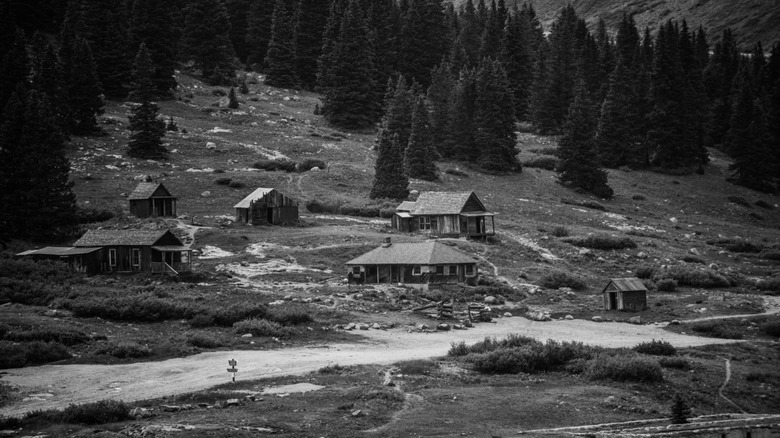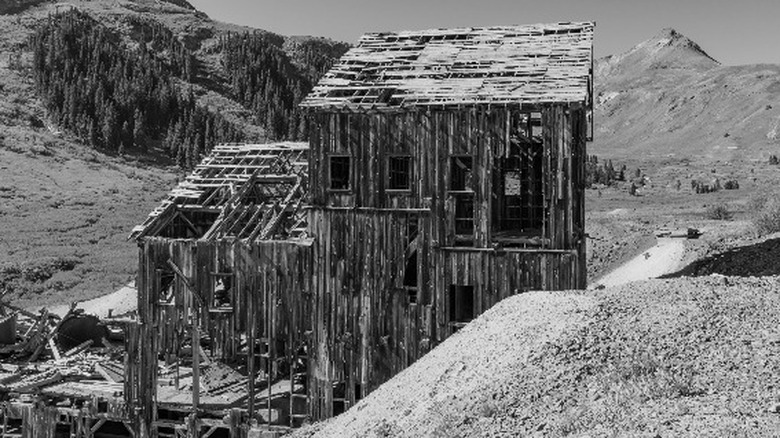Animas Forks: The Truth About This Colorado Ghost Town
In 1873, the Brunot Agreement, forged between the Ute Tribe and the United States government, gave the United States access to 3.7 million acres of land in western Colorado that was previously occupied by the tribe. As reported by Colorado Encyclopedia, the agreement freed the land up for mining and new settlements.
By August of 1874, prospectors descended on the region, and the point where the west and north forks of the Animas River met began to develop into a settlement. In February 1875, the then-named United States Post Office Department opened a post office on the land and named the newly formed town Animas Forks.
With an elevation of more than 11,500 feet, Animas Forks was one of the highest-elevation mining towns in the western United States. As reported by Western Mining History, the 1885 edition of "Crofutt's Grip-sack Guide of Colorado" said Animas Forks was "in the midst of wild and rugged country, where nothing but rich mines would ever induce a human being to live longer than necessary." However, the location and rugged terrain did not deter the prospectors.
In spring 1874, the Dakota and San Juan Mining Company built the town's first mill. As reported by Colorado Encyclopedia, the town also added two boarding houses, a butcher, three general stores, a restaurant, a saloon, and a number of residential cabins.
Throughout the late 1870s and the early 1880s, Animas Forks continued to prosper and became a thriving community. By 1882, the town became a hub for trade and mail delivery.
How Aminas Forks became a ghost town
At the height of its prosperity, Animas Forks had as many as 400 residents. In addition to being incorporated, and being recognized as a municipality in San Juan County, the town built a hotel and a jail, founded a newspaper, started a school district, and even had a telephone. However, as reported by Colorado Encyclopedia, Animas Forks began to decline in the mid-1880s with the downturn of the mining industry.
The decrease in mining activity led to the loss of residents and the subsequent closure of numerous businesses. However, Animas Forks was ultimately destroyed by a devastating fire.
On October 22, 1891, a fire tore through the town and caused extensive damage. Colorado Encyclopedia reports the remaining residents fled, and "the town of Animas Forks was nearly extinct."
Between 1903 and 1907, Animas Forks had a short revival — which was centered around the newly built Gold Prince Mill. However, the mill's owners went bankrupt in 1907, and it was shut down completely by 1910. Another devastating fire, which occurred in 1914, decimated many of the remaining buildings.
As reported by Colorado Encyclopedia, some of the mines in Animas Forks remained operational throughout the 20th century, but the last-known resident moved out in the 1960s. Since then, the once-thriving mining town has become a ghost town.
Animas Forks remains a popular tourist destination, as many of the structures have been restored and preserved. The town has an estimated 250,000 visitors per year.

